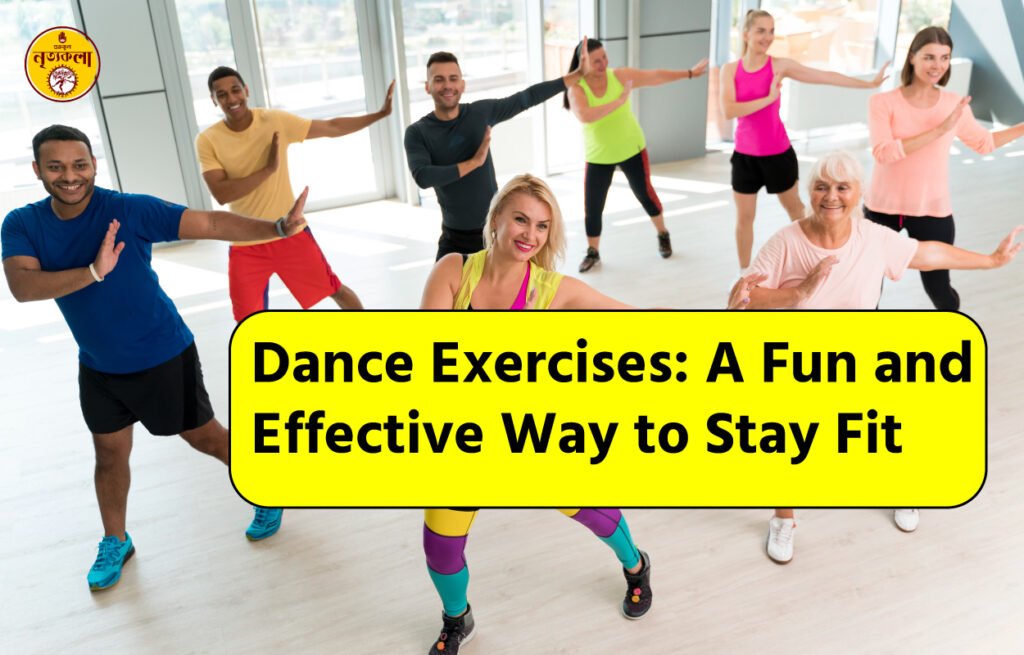Dance exercises are a fantastic way to stay fit while having fun. Unlike traditional workouts that can sometimes feel monotonous, dance exercises combine rhythmic movements and music to create an enjoyable fitness routine. This article explores the benefits of dance exercises, various types of dance workouts, and tips for incorporating them into your fitness regime.
Dance Exercises: A Fun and Effective Way to Stay Fit
Benefits of Dance Exercises
1. Cardiovascular Health
Dance exercises are excellent for cardiovascular health. They get your heart pumping and increase blood circulation, which helps improve heart health. Regular participation in dance workouts can reduce the risk of heart disease, lower blood pressure, and improve overall cardiovascular function.
2. Weight Management
Dance exercises burn calories and help in weight management. Depending on the intensity and duration of the workout, you can burn a significant number of calories. For example, an hour of Zumba can burn between 500 to 800 calories. This makes dance exercises an effective tool for weight loss and maintaining a healthy weight.
3. Muscle Tone and Strength
Different dance styles target various muscle groups, helping to tone and strengthen them. Ballet, for instance, emphasizes leg and core strength, while hip-hop dance works the entire body, including arms, legs, and core. Regular dance exercises lead to improved muscle tone, strength, and endurance.
4. Flexibility and Balance
Dance exercises enhance flexibility and balance. The various moves and stretches involved in dance routines improve your body’s flexibility, making you less prone to injuries. Additionally, many dance styles require balance and coordination, which enhance your overall stability and body control.
5. Mental Health
Dancing has profound effects on mental health. It releases endorphins, the feel-good hormones, which reduce stress and anxiety. Dance exercises also improve cognitive function, as learning and memorizing dance steps challenge the brain, keeping it sharp and active.
Popular Types of Dance Exercises
1. Zumba
Zumba is a high-energy dance workout that combines Latin and international music with dance moves. It’s designed to be a fun and effective cardio workout that improves fitness while burning calories. Zumba classes often feel like a dance party, making it an enjoyable way to stay fit.
2. Hip-Hop Dance
Hip-hop dance workouts are dynamic and energetic, involving a variety of styles such as breaking, popping, and locking. These workouts are great for cardiovascular health, muscle toning, and overall fitness. Hip-hop dance is also a fantastic way to improve coordination and rhythm.
3. Ballet
Ballet is a classical dance form that focuses on grace, precision, and technique. Ballet workouts improve flexibility, strength, and posture. Barre classes, inspired by ballet, combine dance, Pilates, and yoga to create a full-body workout that targets muscles you didn’t even know you had.
4. Salsa
Salsa is a lively and rhythmic dance originating from Latin America. Salsa workouts are great for improving cardiovascular health, coordination, and rhythm. The fast-paced movements and turns provide a good cardio workout, while the dance’s sensual style makes it enjoyable and engaging.
5. Jazzercise
Jazzercise combines jazz dance, resistance training, Pilates, yoga, and kickboxing. It offers a full-body workout that targets cardiovascular fitness, strength, and flexibility. Jazzercise classes are set to upbeat music, making the workout fun and motivating.
6. Belly Dance
Belly dance focuses on core strength, flexibility, and coordination. The fluid and controlled movements of belly dance workouts target the abdominal muscles, hips, and lower back. Belly dance is not only a great workout but also a way to celebrate and embrace body positivity.
Tips for Incorporating Dance Exercises into Your Fitness Routine
1. Choose the Right Style
Select a dance style that you enjoy and that matches your fitness goals. Whether it’s the high-energy moves of Zumba or the graceful techniques of ballet, finding the right fit will keep you motivated and engaged.
2. Start Slow
If you’re new to dance exercises, start with beginner classes or tutorials. Gradually increase the intensity and complexity of the workouts as you become more comfortable with the movements.
3. Warm-Up and Cool Down
Always start your dance exercise session with a proper warm-up to prepare your muscles and reduce the risk of injury. Similarly, end your workout with a cool-down routine to help your body recover and prevent soreness.
4. Stay Consistent
Consistency is key to seeing results from any fitness routine. Aim to incorporate dance exercises into your weekly schedule, ideally three to four times a week, for at least 30 minutes per session.
5. Stay Hydrated
Dance exercises can be intense and lead to significant sweating. Ensure you stay hydrated by drinking plenty of water before, during, and after your workout.
6. Wear Appropriate Attire
Wear comfortable clothing that allows freedom of movement and provides support. Proper footwear is also essential, especially for high-impact dance styles, to protect your feet and joints.
7. Join a Class or Group
Joining a dance class or group can enhance the experience by providing structure, motivation, and social interaction. It can also help you stay committed and make the workouts more enjoyable.
Dance exercises offer a delightful and effective way to achieve fitness goals. They provide numerous physical and mental health benefits, making them an excellent addition to any fitness routine. With a variety of styles to choose from, there’s something for everyone, regardless of age or fitness level. So put on your dancing shoes, turn up the music, and let the rhythm guide you to a healthier, happier you.
See more:

